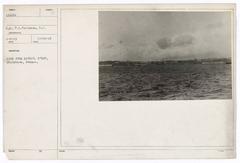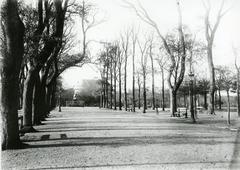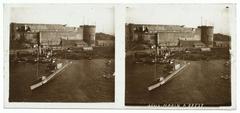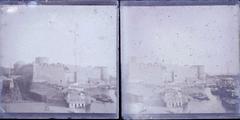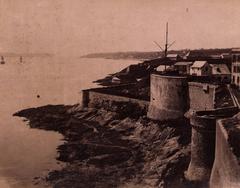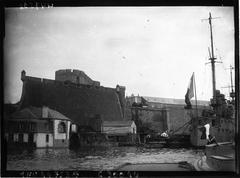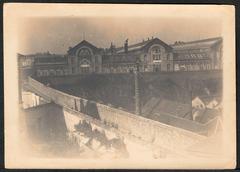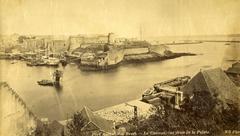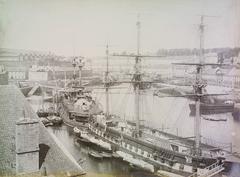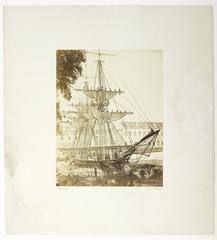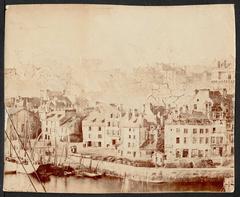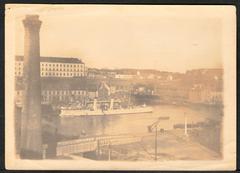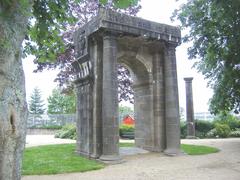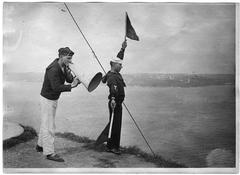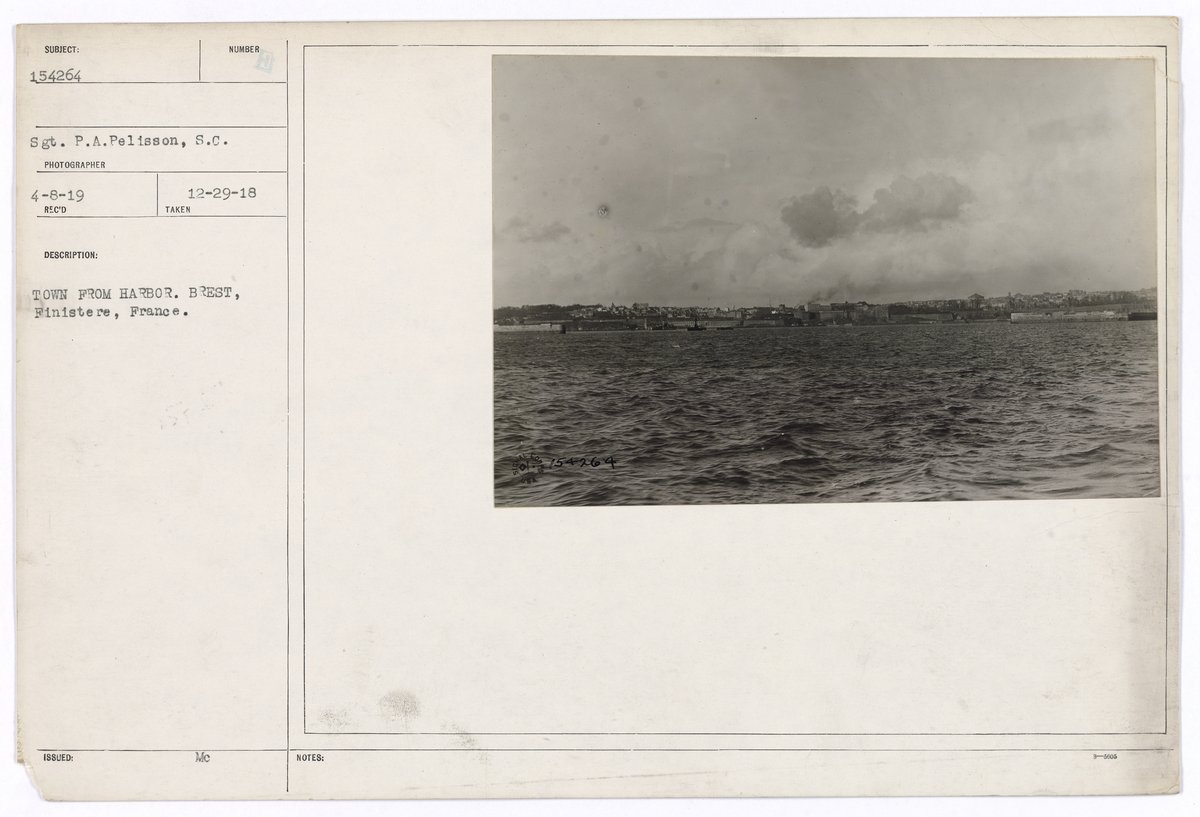
Château de Brest: Visiting Hours, Tickets, and Exploring Brest’s Historic Fortress
Date: 14/06/2025
Introduction
Rising above the mouth of the Penfeld River in Brittany, the Château de Brest is one of Europe’s oldest and most continuously used military fortresses. With origins tracing back to Roman times, this landmark has been at the heart of French and European defense, witnessing over 1,700 years of history—from ancient empires to modern navies. Today, the château invites visitors to discover its layered past, impressive architecture, and central role as both a symbol of resilience and a living fortress. This guide provides all you need to plan your visit, including up-to-date information on hours, tickets, accessibility, tours, nearby attractions, and practical travel tips. Whether you’re a history enthusiast, an architecture lover, or a curious traveler, the Château de Brest offers a fascinating journey through time and maritime heritage. For the latest updates, refer to the Musée National de la Marine – Brest and France Travel Planner.
Table of Contents
- The Historical Evolution of the Château de Brest
- Architectural Highlights and Museum Experience
- Visiting Information
- Getting There and Travel Tips
- Nearby Attractions in Brest
- Recommended Photo Spots & Media
- Frequently Asked Questions (FAQ)
- Conclusion and Planning Your Visit
- References and External Links
The Historical Evolution of the Château de Brest
Roman Foundations and Early Fortifications
The strategic location of the Château de Brest—overlooking the Penfeld River and the great natural harbor of Brest—was first recognized by the Romans in the 3rd century CE. They established a castellum here to defend the province of Armorica against seaborne invasions (cheminsdememoire.gouv.fr). Remnants of these Roman walls are still visible within the fortress, providing the earliest layer of its remarkable architectural palimpsest (fr.wikipedia.org).
Medieval Expansion and Breton Rule
After the fall of Rome, the site remained occupied due to its military significance. By the 11th century, the Counts of Léon rebuilt the fortifications, expanding them into a true castle. During the High Middle Ages, the château became a key stronghold of the Duchy of Brittany. The construction of the Tour César and Tour Paradis in the 14th century marked this era, as the castle was repeatedly strengthened to withstand siege warfare and artillery (spottinghistory.com).
Integration into the French Kingdom
The integration of Brittany into France in the late 15th century brought new strategic importance to Brest. Under French rule, the château was further modernized, adopting Italian military engineering concepts such as bastions and ravelins to adapt to the artillery age.
Naval Significance and Vauban’s Fortifications
The 17th century saw Brest transformed into a major naval base under Cardinal Richelieu and Jean-Baptiste Colbert. The famed military engineer Vauban redesigned the château’s defenses, thickening its walls and integrating it into a broader defensive network to protect the growing arsenal and dockyards (cheminsdememoire.gouv.fr). The castle’s integration with the city’s naval infrastructure remains one of its defining features.
The Château in the World Wars and Postwar Era
During both World Wars, Brest’s harbor and its castle became pivotal military sites. In World War II, the Germans occupied the château, converting it into a prison and command post. Despite extensive bombing that destroyed much of the city, the fortress survived, a testament to its resilient construction (trip101.com). Postwar restoration preserved its historic structures, and today it remains the headquarters for the French Navy’s Atlantic command (en.wikipedia.org, francerent.com).
Architectural Highlights and Museum Experience
The Château de Brest’s architecture reveals its continuous evolution:
- Roman and Medieval Walls: Observe the original Roman masonry and medieval curtain walls, some dating back to the 3rd and 13th centuries.
- Tour César and Tour Paradis: Iconic towers built for defense and as symbols of ducal power.
- Renaissance Bastions: Adapted to withstand artillery, with the Tour Madeleine’s walls reaching an impressive 12 meters in thickness.
- Vauban Modifications: 17th-century ramparts and bastions designed to resist gunpowder-era sieges.
- Underground Passages: Used for defense and refuge during conflict.
Since 1958, the château has housed the Musée National de la Marine, which features:
- Ship models, navigational instruments, and maritime art.
- Exhibits on Brest’s naval and shipbuilding history.
- Temporary exhibitions, workshops, and interactive displays.
Visiting Information
Opening Hours and Seasonal Variations
- April to September: Open daily, 10:00 a.m. – 6:30 p.m.
- October to March: Open daily except Tuesdays, 1:30 p.m. – 6:30 p.m. (Tuesdays open during school holidays, Zone B).
- Annual Closure: January 6 – February 7 for maintenance.
- Last entry: One hour before closing (Musée national de la Marine).
Ticket Prices and Booking
- Full rate: €9
- Reduced rate: €7 (students, seniors, etc.)
- Audioguide: €2 (optional, multiple languages)
- Free Admission: Under 18, EU residents aged 18–25, disabled visitors and one companion (with valid ID).
- Booking: Recommended online, especially during high season or for groups. Tickets are available on-site; payments by cash, card, cheques, and vouchers (Musée national de la Marine).
Accessibility
Due to the historic nature of the château (over 500 steps, narrow passages), it is not wheelchair accessible. Baby carriers are available at reception. For those with reduced mobility, consider alternative sites like the Tanguy Tower (Musée national de la Marine).
Guided Tours and Events
- Regular guided tours (mainly in French; English available seasonally).
- Thematic workshops and temporary exhibitions throughout the year.
- Check the museum’s events calendar for up-to-date programming.
Facilities and Visitor Services
- Restrooms on-site.
- Baby carriers available.
- Museum shop for books and souvenirs.
- No café or cloakroom; eateries nearby.
- Audioguides in multiple languages.
Getting There and Travel Tips
- Address: Rue du Château, 29200 Brest, France.
- Tram: Stop “Château.”
- Bus: Line 2, stop “Musée de la Marine.”
- Car: Limited parking nearby; public transport recommended.
- On foot: Central location, walkable from the main train station.
Visitor Tips:
- Wear comfortable shoes (many steps and uneven surfaces).
- Dress for changeable weather (Atlantic climate).
- Arrive early in summer for fewer crowds.
- Photography is permitted (no flash in some exhibits).
Nearby Attractions in Brest
- Tour Tanguy: Medieval tower with dioramas and harbor views (Marinas Brest).
- Oceanopolis: Renowned aquarium with global marine ecosystems (Discover Walks).
- Les Capucins: Vibrant cultural center for arts and dining.
- Musée des Beaux-Arts: Art museum with works by Monet, Picasso, and regional artists.
Dining: Explore Brest’s seafood and Breton specialties at nearby cafés and restaurants (Places and Things to Do).
Recommended Photo Spots & Media
- Ramparts: Panoramic harbor and city views.
- Tower of Explorers: Sweeping vistas of Brest and the Atlantic.
- Museum galleries: Ship models and maritime artifacts.
Visuals:
Alt text: Panoramic view from Château de Brest ramparts
Explore more visuals and virtual tours on the Musée National de la Marine – Brest website.
Frequently Asked Questions (FAQ)
Q: What are the Château de Brest visiting hours?
A: April–September: daily 10:00–18:30; October–March: daily (except Tuesday) 13:30–18:30; closed Jan 6–Feb 7.
Q: How much is admission?
A: €9 full price, €7 reduced, free for under-18s, EU residents 18–25, and disabled visitors with companion.
Q: Is the château accessible for wheelchairs?
A: No, due to historic stairs and uneven surfaces.
Q: Are guided tours available?
A: Yes, in French throughout the year and in English during peak seasons.
Q: Can I take photographs?
A: Yes, except where signage indicates restrictions (no flash in select areas).
Q: What are the best nearby attractions?
A: Tour Tanguy, Oceanopolis, Les Capucins, and the Musée des Beaux-Arts.
Conclusion and Planning Your Visit
The Château de Brest stands as a monument to centuries of military innovation, maritime prowess, and cultural resilience. Its Roman roots, medieval towers, and Vauban bastions create an immersive historical experience, further enriched by the fascinating exhibits of the National Navy Museum. Make the most of your visit by planning ahead: check opening hours, book tickets in advance, and explore nearby attractions for a comprehensive view of Brest’s vibrant heritage. For audio guides and interactive maps, download the Audiala app. Stay updated on exhibitions and tours via the official museum website.
References and External Links
- Château de Brest: A Historical Fortress and Top Brest Historical Site – Visiting Hours, Tickets, and Visitor Guide (France Travel Planner)
- Visiting Château de Brest: Hours, Tickets, and Historical Highlights (Musée National de la Marine)
- Discover the Château de Brest: History, Visiting Hours, Tickets, and More (Chemins de Mémoire)
- Château de Brest Visiting Hours, Tickets, and Guide to Brest Historical Sites (Musée National de la Marine Practical Information)
- Château de Brest, Wikipedia
- Château de Brest, Spotting History
- Château de Brest, Trip101
- Marinas Brest
- Discover Walks
- Places and Things to Do
